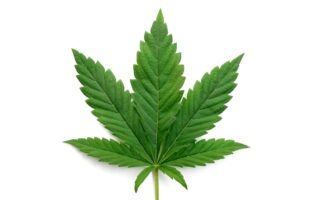Exploring the Green Frontier: A Journey into the World of Cannabis Weed
As the sun sets over fields of vibrant green, a world teeming with possibilities unfurls beneath the rustling leaves of the cannabis plant. Once shrouded in controversy and misunderstood by many, cannabis, commonly referred to as weed, is now stepping into the spotlight, inspiring dialogue and research across global landscapes. From its ancient medicinal roots to its contemporary roles in recreation and industry, the multifaceted nature of cannabis beckons curiosity and deeper understanding. In this article, we embark on a journey through the rich history, various uses, and evolving perceptions of cannabis weed, unveiling the layers that bind this extraordinary plant to humanity’s past, present, and future. Join us as we navigate the complexities and celebrate the resilience of a species that has captivated hearts and minds for centuries.
Table of Contents
- Understanding the Chemical Compounds of Cannabis and Their Effects
- Exploring Different Consumption Methods for Optimal Experience
- Navigating Legal and Ethical Considerations in Cannabis Use
- Best Practices for Responsible Consumption and Storage of Cannabis
- Q&A
- In Retrospect
Understanding the Chemical Compounds of Cannabis and Their Effects
Cannabis is a complex plant that contains a variety of chemical compounds known as cannabinoids and terpenes, each contributing uniquely to its effects. Among the most well-known cannabinoids are Tetrahydrocannabinol (THC) and Cannabidiol (CBD). THC is the compound primarily responsible for the psychoactive effects, or the ”high,” associated with cannabis use, while CBD offers a range of therapeutic benefits without the intoxicating effects. Additionally, cannabis is home to terpenes, which are aromatic compounds that not only influence the plant’s scent but also interact with cannabinoids to create different effects known as the entourage effect.
In understanding the interplay of these compounds, one can appreciate how various cannabis strains provide diverse experiences. For example, the following table outlines some common cannabinoids and their primary effects:
| Cannabinoid | Primary Effects |
|---|---|
| THC | Intoxication, euphoria, increased appetite |
| CBD | Anti-inflammatory, anxiety relief, non-intoxicating |
| CBN | Possible sedative effects, useful for sleep |
| THCV | Appetite suppressant, potential anti-anxiety effects |
Grasping these chemical profiles enables users to make informed choices based on desired outcomes, whether seeking relief from certain ailments or simply exploring recreational experiences. By combining different strains and understanding their compounds, individuals can tailor their usage to align with personal preferences, essentially crafting a unique cannabis experience through the science of synergies among cannabinoids and terpenes.
Exploring Different Consumption Methods for Optimal Experience
When it comes to enjoying cannabis, the method of consumption can significantly affect the experience. From traditional smoking to modern edibles and concentrates, each approach offers its unique set of effects and flavors. For those who prefer the classic feel, joints and blunts allow for easy sharing and social enjoyment, while pipes and bongs can enhance the smoking experience through water filtration. On the other hand, for those looking for discretion or a different taste profile, edibles like gummies and chocolates provide a sweet alternative, allowing for a longer lasting, if not more intense, high.
Beyond smoking and edibles, newer methods such as vaporizers and cannabis oils have gained traction for their ability to provide quick relief without the harshness of smoke. These methods can retain more of the plant’s flavor and aroma while obscuring the telltale signs of consumption. Additionally, the rise of tinctures and capsules has made precise dosing easier than ever, catering to both newcomers and seasoned enthusiasts. It’s essential to choose a method that aligns with your experience level and desired effects to ensure an optimal journey with cannabis.
| Consumption Method | Main Benefits | Considerations |
|---|---|---|
| Smoking | Quick onset, social | Harsh on lungs |
| Vaping | Smoother experience, flavor retention | Requires equipment |
| Edibles | Discreet, long-lasting effects | Delayed onset, harder to dose |
| Tinctures | Precise dosing, fast acting | Alcohol content may not suit everyone |
Navigating Legal and Ethical Considerations in Cannabis Use
When delving into the world of cannabis, it’s essential to understand the intricate web of legal frameworks that vary significantly across jurisdictions. In the United States, for example, cannabis legality is a mixed bag; some states have embraced its recreational and medicinal use, while others maintain strict prohibition. This inconsistency can lead to confusion, making it crucial for users to stay informed about their local laws to avoid potential legal repercussions. To simplify this journey, individuals should consider the following:
- Know Your State’s Laws: Familiarize yourself with both state and local regulations regarding cannabis.
- Understand the Federal Perspective: While certain states permit cannabis, it remains classified as a Schedule I drug at the federal level.
- Stay Updated: Legislation is continually evolving—regularly check for updates on cannabis laws in your area.
Equally important to legal considerations are the ethical implications surrounding cannabis use. As society shifts its perception of cannabis from taboo to acceptable, users must navigate ethical dilemmas, particularly regarding responsible consumption, social equity, and community impact. Education plays a pivotal role in promoting responsible practices, and users can enhance their ethical stance by adhering to the following principles:
- Avoiding Stigmatization: Engage in conversations that destigmatize cannabis, fostering a more inclusive dialogue.
- Support Local Businesses: Opt for locally sourced cannabis products to bolster community economies.
- Encourage Safe Practices: Promote responsible consumption habits, especially concerning driving and harm reduction.
Best Practices for Responsible Consumption and Storage of Cannabis
Responsible consumption and storage of cannabis not only enhances the experience but also ensures safety and quality. To begin with, it’s essential to understand your limits. Start with a small quantity, especially if you’re new to cannabis, and gradually increase your dosage as you become more familiar with its effects. Additionally, you should always choose the right strain based on your desired experience—whether it’s for relaxation, creativity, or medicinal purposes. Engaging with reputable dispensaries can provide valuable insights into which strains align with your needs.
When it comes to storage, preserving the quality of your cannabis is paramount. Store your cannabis in a cool, dark, and dry place to prevent degradation. Glass jars with airtight seals offer the best protection against humidity and light, but you can also utilize UV-blocking containers for an added layer of protection. It’s also beneficial to keep your cannabis out of reach of children and pets by storing it in a secure location. Consider labeling your jars with date and strain information to monitor freshness. Here’s a simple table to guide you on optimal storage conditions:
| Conditions | Ideal Level |
|---|---|
| Temperature | 60-70°F (15-21°C) |
| Humidity | 55-62% |
| Light | Dark |
| Container Type | Glass Jar / UV Container |
Q&A
Q&A: Exploring the World of Cannabis Weed
Q: What exactly is cannabis weed?
A: Cannabis weed refers to the dried flowers and leaves of the cannabis plant, scientifically known as Cannabis sativa or Cannabis indica. These plants contain compounds called cannabinoids, the most well-known being THC (tetrahydrocannabinol) and CBD (cannabidiol), which contribute to the plant’s psychoactive and therapeutic effects.
Q: How do people typically consume cannabis weed?
A: There are numerous ways to enjoy cannabis weed. Common methods include smoking it in joints or pipes, vaporizing, and using it in edibles like brownies or gummies. Some may also apply cannabis-infused oils or tinctures sublingually, allowing for rapid absorption. Each method offers a different experience and onset time.
Q: What are the potential effects of cannabis weed?
A: The effects can vary widely based on the strain, dosage, and individual physiology. Typically, users may experience relaxation, euphoria, increased appetite, and altered perception of time. Some might also face side effects like anxiety, paranoia, or impaired memory, particularly with high-THC strains.
Q: Is cannabis weed legal everywhere?
A: The legality of cannabis weed varies globally, with some countries embracing full legalization, others allowing medical use only, and some maintaining strict prohibition. In the United States, for instance, the legal landscape differs from state to state—while some states have legalized cannabis for recreational use, others only permit medical use or have yet to enact any form of legalization.
Q: What are the medical benefits of cannabis weed?
A: Cannabis weed has been researched for its potential therapeutic benefits. Some studies suggest it may help alleviate chronic pain, reduce inflammation, manage anxiety, and lessen the severity of seizures in epilepsy patients. However, more research is needed to fully understand its medical efficacy and long-term effects.
Q: Can cannabis weed be addictive?
A: While many people use cannabis without developing dependency, some studies indicate that a subset of users may experience cannabis use disorder. This condition can lead to cravings, withdrawal symptoms, and compulsive use despite negative consequences. The likelihood of developing dependency may relate to factors like frequency of use and individual vulnerability.
Q: What is the difference between THC and CBD?
A: THC and CBD are both cannabinoids found in cannabis, but they interact with the body differently. THC is primarily responsible for the psychoactive effects, offering a ”high” that many users seek. On the other hand, CBD is non-psychoactive and is often praised for its calming and therapeutic properties without the euphoria associated with THC.
Q: How should beginners approach using cannabis weed?
A: Beginners should exercise caution and start with a low dose, particularly with high-THC strains, to gauge their individual tolerance and reactions. Additionally, it’s advisable to use products from reputable sources and seek guidance from knowledgeable staff at dispensaries. Understanding the difference between strains and consumption methods can also enhance the experience.
Q: Are there any tips for responsible use of cannabis weed?
A: Absolutely! Responsible use includes knowing your limits, consuming in a safe environment, and avoiding driving or operating heavy machinery while under the influence. It’s also important to consider the local laws and regulations concerning cannabis use in your area to ensure compliance.
By delving into these questions, we can better navigate the multifaceted world of cannabis weed, understanding both its potential benefits and cautions. Whether for recreational or therapeutic purposes, informed and responsible usage can lead to a more enjoyable and safe experience.
In Retrospect
As we draw the curtain on our exploration of cannabis weed, it’s clear that this enigmatic plant continues to shape cultures, economies, and conversations. From its ancient roots in holistic healing to its contemporary role in recreational enjoyment and medicinal rehabilitation, cannabis remains a multifaceted topic laden with potential and complexity. Whether you approach it with curiosity, caution, or advocacy, understanding the nuances of cannabis is an essential journey in today’s evolving landscape. As laws change and perceptions shift, we are reminded that responsible discourse and informed choices will pave the way for a future where cannabis can be appreciated for all its qualities. So, as you navigate this evolving terrain, may your insights deepen and your understanding flourish, leading to a greater appreciation of what cannabis weed truly represents in our lives.


